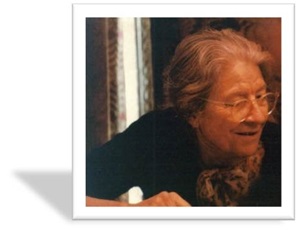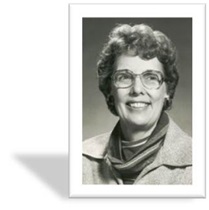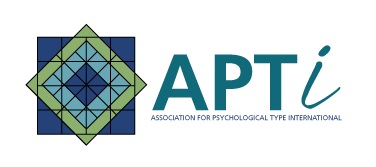History
THE CAPT ERA: 1975-1987, Birth, Affiliation, Support and Independence.
It was the developing relationship between Isabel Myers and Mary McCaulley in the late 1960s that paved the way for the creation of the Association for Psychological Type.
Isabel Myers

The relationship set the stage for three significant events that all occurred in 1975. The first, and perhaps most significant, event was the founding of The Center for Applications of Psychological Type (CAPT) by Isabel Myers and Mary McCaulley, in order to foster “the constructive use of differences.” That same year, a group of faculty from the University of Florida organized and ran The First MBTI Conference, held in October of 1975, to coincide with Isabel Myers’ birthday on October 18th. Finally, that same fateful year, MBTI was recognized for practical application and its publication was transferred from The Educational Testing Service (ETS) to Consulting Psychological Press (CPP).
Mary McCaulley

CAPT began operating as part of the AMSA (American Medical Student Association) Foundation. The MBTI News, published by CAPT was written by Mary McCaulley. Interests groups were soon formed and professional training was offered. CAPT also took over sponsorship of The MBTI Conferences.Laterin 1979, CAPT became an independent non-profit organization. Mary McCaulley quickly determined that the activities of the newly formed organization were pulling too much time and effort away from research, and determined it best to set up a separate, activity-focused organization. That idea got immediate traction and conversations among the CAPT Board began to launch a new organization designed to lead conferences, training and communities.
Harold Grant, a board member on CAPT, volunteered to author a proposal for the structure of the new organization. Ed Golden agreed to chair the upcoming 1979 conference, and use it as a launching pad for the new organization. In fact, it was his idea to discount the conference by $15 for anyone who agreed to join the new organization, in order to encourage membership.
In 1979, The Third MBTI Conference was held. The location was selected to make it more convenient for the then ill Isabel Myers to attend and a special banquet was arranged to celebrate her 82nd birthday. The theme of the conference was New Horizons, with the keynote delivered by David Keirsey. The topic was New Horizons in Understanding Differences: Temperament in Behavior. In some ways, the event heralded the new organization and its future direction of inclusiveness.
However, the launch of the new organization was not without complication. Controversy developed over whether it should be formed as more of an academy, comprised of a small number of highly skilled and accomplished professionals, or a larger membership organization, open to professionals and educators who had an interest in psychological type. The discussions of the founding members were led by Dorothy Emerson. The original proposal presented to the members supported the academy design and it was defeated. Members opted instead to create “a general membership organization.” The discussion in which the organization was named was highlighted by Otto Kroeger’s motion to use the word “Association” and Gordon Lawrence’s motion to use the term “for.” So the name was determined to be “The Association for Psychological Type.” Article I, Section One of the constitution was approved and read, “The name of this organization shall be The Association for Psychological Type (APT). APT shall initially be affiliated with The Center for the Application of Psychological Type (C.A.P.T.).”
Katharine Myers

The defeated proposal led to a leadership void. Fortunately, Katharine Myers stepped into this void and filled it wonderfully, with a bright vision and a deep determination to launch this organization successfully and in a manner that would endure. The founding officers of APT also included Susan Brock as President-elect, Sally Golden as Treasurer, Sheldon Kitt as Secretary, and David Keirsey and Eve Delunas as members-at-large.
Katharine’s original conference role and her leadership led to the creation of the Interest Areas. She appointed a group of specialists to create and lead conference segments, discussing their various areas of interest and specialization. That group was also asked to help draft the bylaws and to join the founding board. The group included J. Pendleton Waggeners for Careers and Occupations; Eleanor Barberousse for Counseling and Psychotherapy; Barbara Highland for Education; Gary Hartzler for Organizational Development; Naomi Quenk, for Psychological Theory; Tom Carskadon for Research and Sister Marie Cornelia Weychest for Religious Issues. In addition, the first Regional Vice Presidents were also appointed. They were O.W. Lacy for the Northeast, Gae Boyd for the Southeast, Dorothy Emerson for the Southwest, Shirley Dahlen for the Midwest, Louise Giovannoni for the West, and Jane Hardy Jones for the Pacific.
So, in 1979, APT was launched under the stewardship of CAPT with $3,000 in the bank. The next summer, the first board meeting was held in a retreat house just outside St. Louis. Fortunately, there were two facilitators asked to lead the discussions, Gary Hartzler and Alan Brownsword. Unfortunately, no minutes were taken. With two days to complete the articles of incorporation and the bylaws, the facilitators relied upon the gift of type to aid with the facilitation. After it was determined that 9 of the 13 board members had preferences for FP, time was carefully allocated to each section of the agenda, and those time allocations were monitored. One highlight was the adoption of Article II, Section One. Membership Qualifications, which stated “Any individual with any interest in psychological type may become a general member ofAPT…” Their work was successful but their organization was low in funds. The board determined that members would donate $100 each in return for lifetime memberships to APT. With that bit of financial cushion, $2200 could be allocated to CAPT for logistical and administrative support. APT was launched and operational.
Later in 1980, APT took a major step, becoming a separate non-profit 501(c)3. CAPT’s last issue of The MBTI News was the 1980 Tribute to Isabel Myers Issue. Thereafter, that became a publication of APT. (The name was later changed to The Bulletin of Psychological Type). The 1981 conference was run operationally by APT. The CAPT Interest Area Organization was turned over to APT, as well.
The 4th MBTI Conference was held at Stanford University in 1981. It was there that a great partnership between a membership organization with not much tangible to offer their members (APT) partnered with a wonderful publication (The Journal for Psychological Type), which lacked a distribution channel. It was agreed that APT would take over from CAPT the delivery of their newsletter, then called The MBTI News, and The Journal for Psychological Type, formerly called Research in Psychological Type. To help to cover the delivery costs to each member, the dues of APT were increased by $5 annually. The first editor was Thomas Carskadon.
APT continued to grow and expand. Mary Ellen Bogart was the first CAPTemployee assigned full-time to support the growing APT. By 1985, with the addition of the APT MBTI Training Program, the APT staff grew into a full department at CAPT. Finally, by 1987, APT grew to a size and complexity that necessitated taking over their own operations.
But the threads of partnership and tradition remain strong, even today. One of the first calls received by an incoming APT President is from the Research Librarian at CAPT who requests the information necessary to start the production of their “President’s Pin.” This gift from CAPT to the President of APT is a wonderful tradition started in the mid- 1980s by Mary McCaulley.
The relationship is alive in our traditions, partnerships and actions.
The 1980s and 1990s: Independence and Growth
The 1980s were fertile ground for the growth of the newly independent APT. During that decade, the MBTI gained in popularity. In 1985, the addition of the MBTI qualifying programs and the associated membership and revenue increases, APT continued to grow in community, within the chapters and interest areas, and in spirit.
The 1980s and 1990s saw great advances in the development of type theory and applications. Practitioners were beginning to look deeply past the four letter MBTI code to understand and clarify the 8 Jungian functions (aka cognitive processes). Some of the APT leaders in this thinking were Margaret and Gary Hartzler and Linda Berens, based on the groundbreaking work of Jungian Analyst, Dr. John Beebe. Along with these APT leaders, Leona Haas and Bob McAlpine developed this approach further and Dick Thompson wrote the first book on the Function/Attitudes. And as we moved into the 1990s, there was a shift in emphasis to systems thinking. As it applied to type theory, focused moved more on to “whole type”, rather than the parts of type; a dynamic system of energy that shows the interconnections from process to process and from conscious to unconscious. This emphasis was brought forth at the 1993 APT XI Conference in Newport Beach, California with John Beene as a speaker, a session on type bias that results from looking at parts, and an appeal to start speaking of “preferences for…” rather than “…is a type.” It was further highlighted at the 1995 APT XII Conference in Boston, where the significance of the language of type was clarified, and practitioners were encouraged to speak to the whole and not parts of an individual’s type.
During these years, the publications of APT developed into an enormous source of pride.
With each new volume, the quality of the Journal of Psychological Type (a labor of love for Thomas Carskadon) reached new heights. In 1982, the theme of Volume 5 was “business management and organizational development”, and leading contributors were Gary and Margaret Hartzler. Two years later, Volume 7 was the first Journal that was professionally printed. In 1997, Volume 43 added a new section called “Applications of Psychological Type”, directly in line with the vision of our founders. The organization was not only progressing and doing so within its original charter, but becoming the standard bearer for leading edge thinking and excellence in standards.
The APT communities were building connections becoming learning and sharing centers. Under the leadership of Louise Giovannoni and Eve Delunas, the Western Region grew in members and fostered the development of APT. In fact, the Southern California Chapter, at one point, grew to more than 2,000 members. In 1980, The Western Regional Conference was held and attracted many of the students of David Keirsey. During that time, Linda Berens began her long lasting association with APT. At the 1983 APT Conference in College Park, Maryland that was completed by Program Chair, Alan Brownsword and Conference Chair, Gary Hartzler, Berens presented a two-day, pre-conference workshop on temperament and type dynamics. She continued to refine the work of David Keirsey and, together with Louise Giovannoni and Sue Cooper, co-authored Introduction to Temperament, published in 1990.
During the late ‘80s and early ‘90s, a series of sister organizations started to develop around the world. The British Association for Psychological Type,BAPT, was founded in 1989. It’s purpose “To promote the understanding of, knowledge about and use of Jungian psychological systems, mainly (but not exclusively) with reference to MBTI.” The New Zealand Association for Psychological Type, NZAPT was founded in 1990, its mission “To promote the ethical use of Psychological Type in Aotearca – New Zealand.” The Australian Association for Psychological Type, AusAPT was founded in 1992, and exists to“Promote knowledge and use of psychological type in the Australian society, in particular, for the professional uses of type.” Their mission is “To expand knowledge of psychological type and to support the ethical use of psychological type and its instruments.”
This global reach prompted APT to change its name to Association for Psychological Type International.
A series of wonderful presidents led APT during the 1980s and 1990s. They were: Katharine Myers, Susan Brock, Gordon Lawrence, Naomi Quenk, Sue Lynn, FlavilYeakley , Nancy Barger, Roger Pearman, Barbara Olsen, Tad Guzie, Patricia Otto, Marti Singer and Elizabeth Murphy. Among the group of 12 were six with preferences for NFP and nine with preferences for NP.
Conferences were held at Stanford University (The 4th MBTI Conference, 1981), College Park, MD (APT V, 1983), Evanston, IL. (APT VI, 1985), Gainesville, FL. (APT VII, 1987), Boulder CO. (APT VIII, 1989), Richmond, Virginia (APT IX, 1991), Newport Beach, California (APT X, 1993), Kansas City, Missouri (APT XI, 1995), Boston, Massachusetts (APT XII, 1997), and Scottsdale, Arizona (APT XIII, 1999).
The 2,000s: Possibilities and Challenges
With the advent of the 2000s, APTi faced the difficult balance of leading through some rather significant challenges, while, at the same time, nurturing some new possibilities.
However, by this time, the APTi e-Chapter, formed to extend the benefit of community connection to those members who were not located in a chapter area, was gathering momentum. The first event in a long continuing series of quality programs featured Otto Kroeger. Thanks to the first President, Marilyn Parente, and Board member champions, Linda Trommelyn and Sidney Courtice, the group met face-to-face for the first time in Portland at the 2005 conference. The first e-learning events sponsored by the e-Chapter featured Pat Wyman in 2005 and Katherine and Elizabeth Hirsh in 2006. The e-Chapter remains today a very special and vital part of this organization.
In 2006-2007, while membership organizations, in general, were experiencing decreases in membership, APTI’s membership started to steadily decline, as did revenue. Three times, during this period, changes in the administrative management of APTi have required change, in order to reduce costs. The most recent change resulted in a 31% reduction. In an attempt to improve revenue, membership levels were extended to widen the funnel to our premium and loyal memberships and extended benefits were offered.
In 2008, the publisher decided to cease offering MBTi® qualifying programs through APTi. The financial challenge this created compelled the APTi Board in 2009 to increase the membership dues to $110, the first increase in dues in more than a decade. Also in 2009, the APTi Board determined it was necessary to require the Chapters to pay affiliate dues to share in the actual legal, accounting, and support costs incurred by the parent organization.
In 2017, APTi became an all-volunteer run organization, self-administering in an effort to reduce overhead while continuing to provide excellent programing and membership benefits. In February of 2022, APTi hosted it's first virtual conference which was necessitated by the global COVID-19 pandemic. Based on the success of the first virtual conference, a second online conference was held in November of the same year.
|



